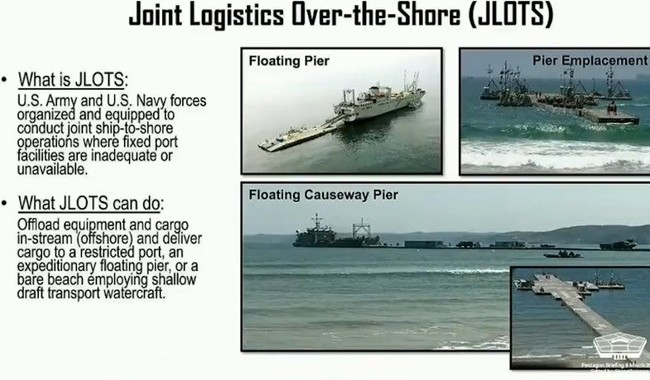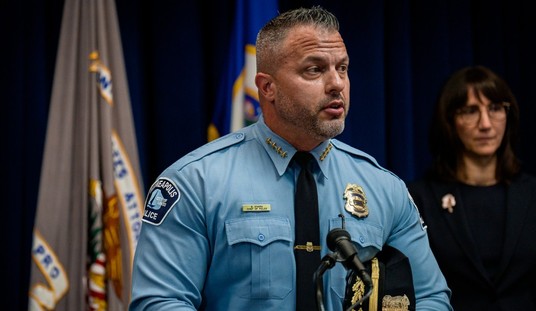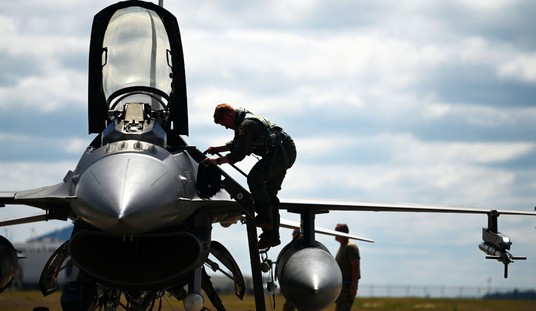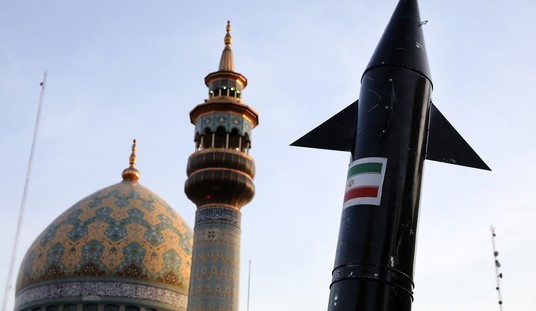President Joe Biden used the occasion of his State of the Union speech to announce that the US military would construct a temporary port facility in Gaza to provide humanitarian assistance to the terrorists and terrorist-simps taking refuge there.
The United States has been leading international efforts to get more humanitarian assistance into Gaza. Tonight, I’m directing the U.S. military to lead an emergency mission to establish a temporary pier in the Mediterranean on the coast of Gaza that can receive large shipments carrying food, water, medicine, and temporary shelters.
No U.S. boots will be on the ground.
A temporary pier will enable a massive increase in the amount of humanitarian assistance getting into Gaza every day.
BACKGROUND:
Biden to Announce US Will Build New Port in Gaza for Aid Deliveries During SOTU Speech
Even Dems Protest Biden's SOTU in the Chamber, As He Caves With Move That May Endanger U.S
This is Pentagon spokesman Major General Pat Ryder expaining the operation on Friday.
Note that this version of General Ryder's statement is abridged. For the full text of his statement, visit this link.
Simply put, they'll establish a temporary offshore maritime pier that allows for shipping vessels to transfer cargo to smaller vessels to transport and offload cargo to a temporary causeway for the delivery of humanitarian aid to Gaza.
Importantly, there will be no U.S. forces on the ground in Gaza. And as for aid distribution, we'll have more details in the future, but we are coordinating with ally and partner nations, the U.N. and humanitarian NGOs on the way ahead for distribution of assistance into Gaza.
Finally, in terms of timing, we're working to set this up as quickly as possible, but we expect that it will take several weeks to plan and execute. Once operational, the actual amount of aid delivered will depend on many variables, and will likely scale over time. However, we expect that deliveries via JLOTS could provide more than two million meals to the citizens of Gaza per day.
The Basics
It will be in operation in about 60 days.
The US Army 7th Transportation Brigade (Expeditionary) from Joint Base Langley-Eusits, VA.
The US Navy will not play a role.
The Military Sealift Command and logistics support vessels (LSV) involved.
Aid will be loaded on ships in Cyprus.
The port will provide up to 2 million meals per day.
The operation will be under CENTCOM command.
What Does It Look Like?
The system, called Joint Logistics Over-the-Shore, is designed to be used when regular port facilities are unavailable. It is a two-stage system. Ships are offloaded onto a "floating pier." The cargo is moved by lightering to a floating causeway. There, the cargo is transloaded onto trucks. Most, if not all, of the supplies will be in containers. This means the containers must go to a holding area ashore where the loads are broken down into truckloads for delivery. It is not a simple, drive-the-truck-off-the-ship-and-feed-the-people operation, and it will only work if it is allowed to operate in peace.

This is the system in operation.
Why Do This?
Good question.
To all appearances, this is a military exercise in search of a problem to solve. As someone on "X" said, "Warning to Staff Officers EVERYWHERE! That bonkers third COA [course of action] that you throw in with little thought and assume the commander will dismiss? Well, guess what???"
Why not just use existing ports? Seems to make a lot more sense than trying to build one from scratch. But security for the Navy delivering supplies is still the greatest reason for NOT doing this. The USS Cole and the Beirut bombing of 1983 make suicide attacks a major risk. pic.twitter.com/uUhWHQvOzp
— John Bulkeley (@bulkeley_john) March 9, 2024
There seems to be more than adequate port facilities in existence to address the humanitarian problem, assuming Israel is willing to cooperate.
The best answer I can come up with, other than Joey SoftServe mumbling about Ramadan and Jerusalem, is that his promise of a cease-fire by Monday didn't materialize (looking for a "shocked face" emoji to express my level of surprise). This is just Biden being the faux tough guy that he imagines himself to be.
What Are the Challenges?
Sal Mercogliano, an authority on shipping operations, writes a long thread on the subject of the challenges. Much of the gear needed for the operation is prepositioned in the Pacific. The port will be constructed in open sea with no natural barriers to wind or wave action.
2/Ashdod in Israel is a large port and could handle the cargo, but it would require transport and delivery through Israeli territory. pic.twitter.com/f6728olyOl
— Sal Mercogliano (WGOW Shipping) 🚢⚓🐪🚒🏴☠️ (@mercoglianos) March 8, 2024
Aside from the technical difficulties, like managing the area where containers will come ashore and be broken down into truckloads, Mercogliano points to more difficulties.
So the most interesting parts that I heard from @DeptofDefense briefing.
— Sal Mercogliano (WGOW Shipping) 🚢⚓🐪🚒🏴☠️ (@mercoglianos) March 8, 2024
They plan on building a floating pier - a RRDF (roll-on/roll-off discharge facility); offload cargo onto the RRDF, transfer it to a @USArmy LSV (landing ship vehicle); and then sail it to the pier attached… https://t.co/zqox4LL4KB pic.twitter.com/VqmE3xp30j
What Are the Risks?
The most significant risk is obviously security. By creating a large, lucrative target manned by Americans, we are begging for an attack. This temporary port will probably be constructed in the "Humanitarian Safe Zone," which is under Hamas control. The promise of "no boots on the ground" means that Hamas will perform the shoreside security. If security is not by Hamas and instead performed by one of General Ryder's mysterious "ally and partner nations," they will only survive if they become an adjunct to Hamas. No matter the arrangement, it means Hamas fighters will get first choice on all supplies. I'm trying to imagine the political upside of collaborating with a terrorist force, but I've got nothing.
Our experience with the US Marine barracks in Beirut and the USS Cole accentuates the very real risks of a catastrophic attack against a stationary target dependent upon local forces for security. Russia's experience in the Black Sea should be a lesson about the danger posed to any surface target by unmanned surface vehicles. The statement that the US Navy will not be involved begs the question of how ships using the temporary port will be protected from attack.
What is more ominous is that there is no public indication that either Israel or Hamas support the idea.
If none of that scares you, this should. The guy managing this fiasco in the making is National Security Council Chief of Staff, Curtis Ried. He's a career state department official with no experience in managing anything, and it looks like he got to the top through hard work: Meet Biden's new highly qualified executive queer, Curtis Ried.
Will It Make a Difference?
It is difficult to tell.
According to aid officials, 120 trucks reach the "Humanitarian Safe Zone" every day. At least 480 are needed to provide the necessities for the people there. It is hard to see how 360 truckloads can be unloaded daily from ships from a temporary port. People on the ground are skeptical.
But U.S. officials said the project would take at least 30 to 60 days to complete, raising questions about how famine in Gaza will be staved off in the critical days ahead.
The aid group Doctors Without Borders said in a statement Friday that the U.S. maritime plans were a “glaring distraction” and that the delivery of aid was not a logistical problem but a “political” one.
“The food, water, and medical supplies so desperately needed by people in Gaza are sitting just across the border,” the group said in a statement. “Israel needs to facilitate rather than block the flow of supplies.”
As in so many cases, famine is not caused by a lack of food but by a lack of security.
According to a second U.S. official who spoke to reporters, a chief problem was not getting aid trucks into Gaza but rather distributing assistance within the Strip, primarily because convoys, without police escorts, were now a target for criminal gangs. Officials also blamed Hamas for weaving military targets into Gaza’s landscape and society.
What Next?
If we're lucky, the operation will collapse under the weight of its own planning contradictions, and no one will get killed. If we're not lucky, American troops supporting the operation will be targeted and will die. That will lead us into a Lebanon 1983 or a Mogadishu 1993 scenario where a small-scope humanitarian mission mushroomed into something not very humanitarian at all.













Join the conversation as a VIP Member